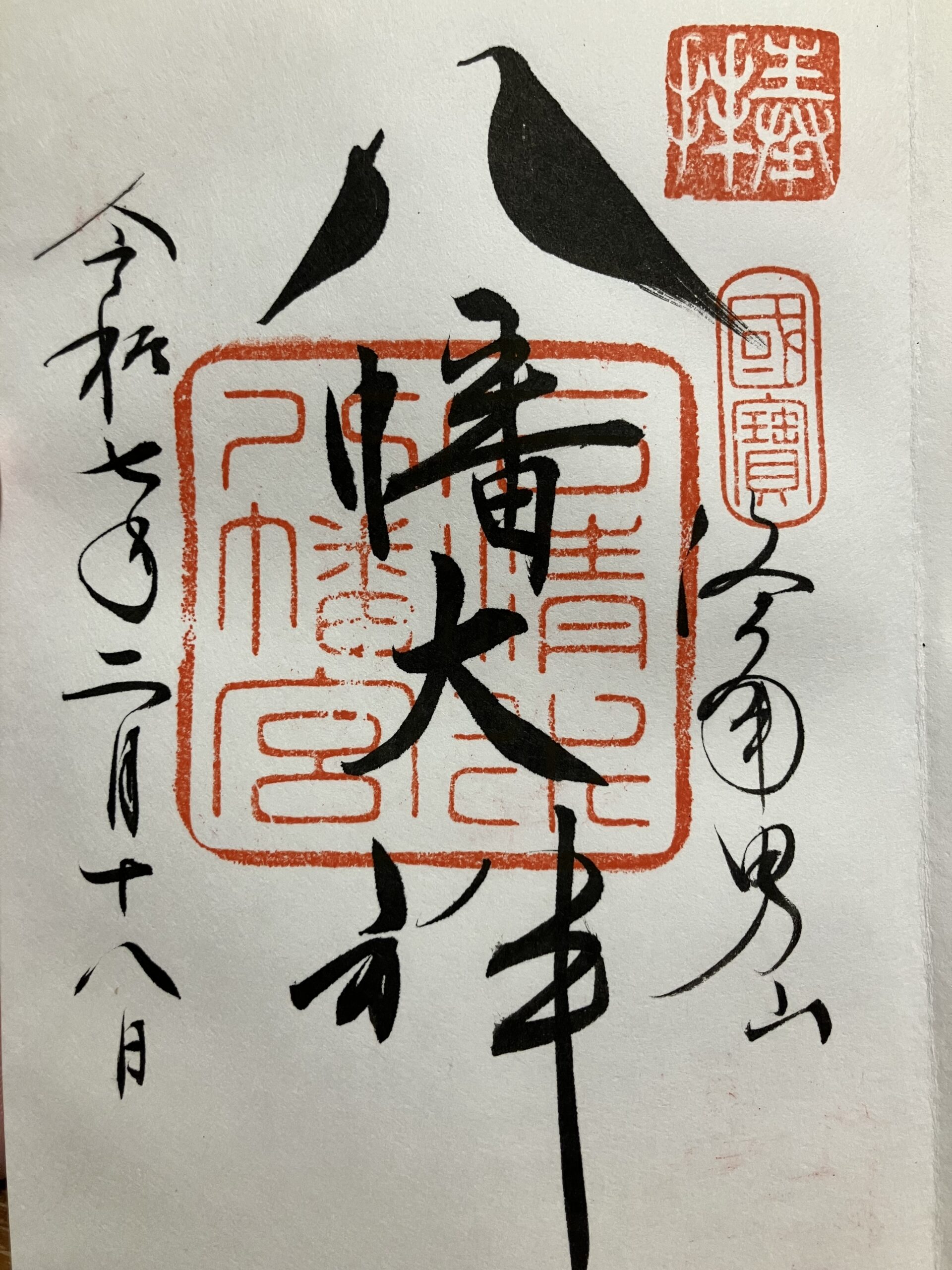Do you want to get any Gosyuincho?
Nestled on the lush Mount Otokoyama, just south of Kyoto, Iwashimizu Hachimangū is one of Japan’s most important Shinto shrines. With over 1,100 years of history, it stands as a symbol of divine protection, rich tradition, and breathtaking architectural beauty. Whether you’re a history enthusiast, a spiritual seeker, or a traveler looking for a unique cultural experience, this shrine is a must-visit destination.
Why Iwashimizu Hachimangū Is Worth Visiting
A Shrine with Over a Millennium of History
Iwashimizu Hachimangū was founded in 859 AD as a place to worship Hachiman, the guardian deity of warriors and the imperial family. Throughout history, emperors and samurai alike have prayed here for protection and victory. Even today, the shrine remains a powerful spiritual center where people come to seek blessings for success, safety, and prosperity.
Visiting this shrine is like stepping into the past—walking the same paths where emperors and samurai once tread, feeling the sacred energy that has been preserved for centuries.
Stunning Architecture and Scenic Views
One of the highlights of Iwashimizu Hachimangū is its Hachiman-zukuri architectural style, a unique design rarely seen in other shrines. The main hall (honden), designated as a National Treasure, showcases intricate carvings, beautifully painted surfaces, and a deep sense of elegance.
Another must-see spot is the Kiyomizu Pavilion, an open-air wooden deck that offers breathtaking panoramic views of Kyoto and the surrounding mountains. Whether you visit in spring with cherry blossoms, summer with lush greenery, autumn with vibrant maple leaves, or winter with a quiet dusting of snow, the scenery is always spectacular.
Seasonal Festivals That Bring History to Life
If you want to experience Japanese traditions up close, visiting during one of Iwashimizu Hachimangū’s festivals is highly recommended.
• Iwashimizu Festival (September 15th)– A grand procession where priests, shrine maidens, and performers in colorful attire recreate ancient rituals.
• Setsubun Festival (February 3rd)– A lively event where people throw roasted soybeans to ward off evil spirits and welcome good fortune.
• New Year’s Celebrations (January 1st–3rd)– One of the most popular times to visit, as thousands come to pray for a prosperous year.
These events allow you to see, hear, and feelJapan’s vibrant spiritual culture firsthand.
How to Get to Iwashimizu Hachimangū
By Public Transportation
Taking public transport is the easiest way to reach the shrine.
1. From Kyoto Station, take the JR Nara Lineto Tofukuji Station(2 minutes).
2. Transfer to the Keihan Main Lineand get off at Iwashimizu-Hachimangū Station(20 minutes).
3. From there, you can either walk uphill for about 30 minutesor take the Otokoyama Cable Car(5 minutes) for a more relaxed ascent.
The journey itself is part of the experience—especially the cable car ride, which gives you a fantastic view of the surrounding forest and cityscape.
By Car
For those driving, parking is available near the shrine, but spaces can be limited during busy seasons.
• From Kyoto/Nagoya: Take the Meishin Expressway, exit at Seta-higashi Junction, and follow Route 478.
• From Osaka/Kobe: Take the Meishin Expressway, exit at Oyamazaki IC, and follow Route 171 and Route 478.
Driving gives you the flexibility to explore nearby attractions, such as Byōdō-in Temple in Ujior Fushimi Inari Shrine in Kyoto, making it a great option for a day trip.
A Sacred Place That Offers More Than Just a Visit
Iwashimizu Hachimangū is not just a sightseeing spot—it’s a place where history, spirituality, and natural beauty come together.
Standing before the grand torii gate, breathing in the crisp mountain air, and feeling the weight of centuries of tradition, you’ll understand why this shrine has been cherished for over a millennium.
Whether you come for the stunning views, the historical significance, or simply to soak in the peaceful atmosphere, a trip to Iwashimizu Hachimangū will leave a lasting impression.
So next time you’re in Kyoto, take a short journey south and experience the magic of Iwashimizu Hachimangū for yourself.



コメント